SEO Observations on Grok Web Searches
SEO and AI searches are evolving rapidly, with large companies leading this change by integrating AI applications into their search functionalities. Google’s AI Overview, SearchGPT, and Perplexity searches have become increasingly common. In this article, I’d like to evaluate XAI’s Grok from an SEO perspective. As I write this article, the latest version of Grok is 2, so I’ll base my comments on that version. Think of this as a brief report.
Grok, with its natural integration into X, is in a constant learning mode. This allows Grok to adapt to emerging information and trends, providing some of the most dynamic and up-to-date responses. It currently doesn’t have a separate mobile app and operates within X. Let’s begin with a few general insights:
What is Grok?
Grok is an AI chatbot developed by xAI, a company founded by Elon Musk in 2023. It has been integrated into the X (formerly Twitter) platform.
Does Grok have API support?
Yes, you can sign up at https://console.x.ai and use the Grok API.
Grok can ensure its responses are relevant and timely by analyzing the latest tweets, news, and discussions. This feature is especially useful in fields like technology and science. For example, while Google Trends helps you monitor real-time trends, Grok allows you to follow such research and news much faster.

1. Grok Search Results Are Different from Google’s
First, let's start with a simple example prompt: "Where to eat menemen in Samsun?" When looking at the "Relevant Web Pages" section, you’ll notice that it includes a variety of different websites. Of course, the appearance of these sites may change over time, but they are displayed in a "tile" format. It’s important to note that Grok does not add any additional parameters to the listed sites. This means that Grok relies on real-time data from X (Twitter) and provides relevant, up-to-date suggestions without any extra filtering or categorization for the sites presented.
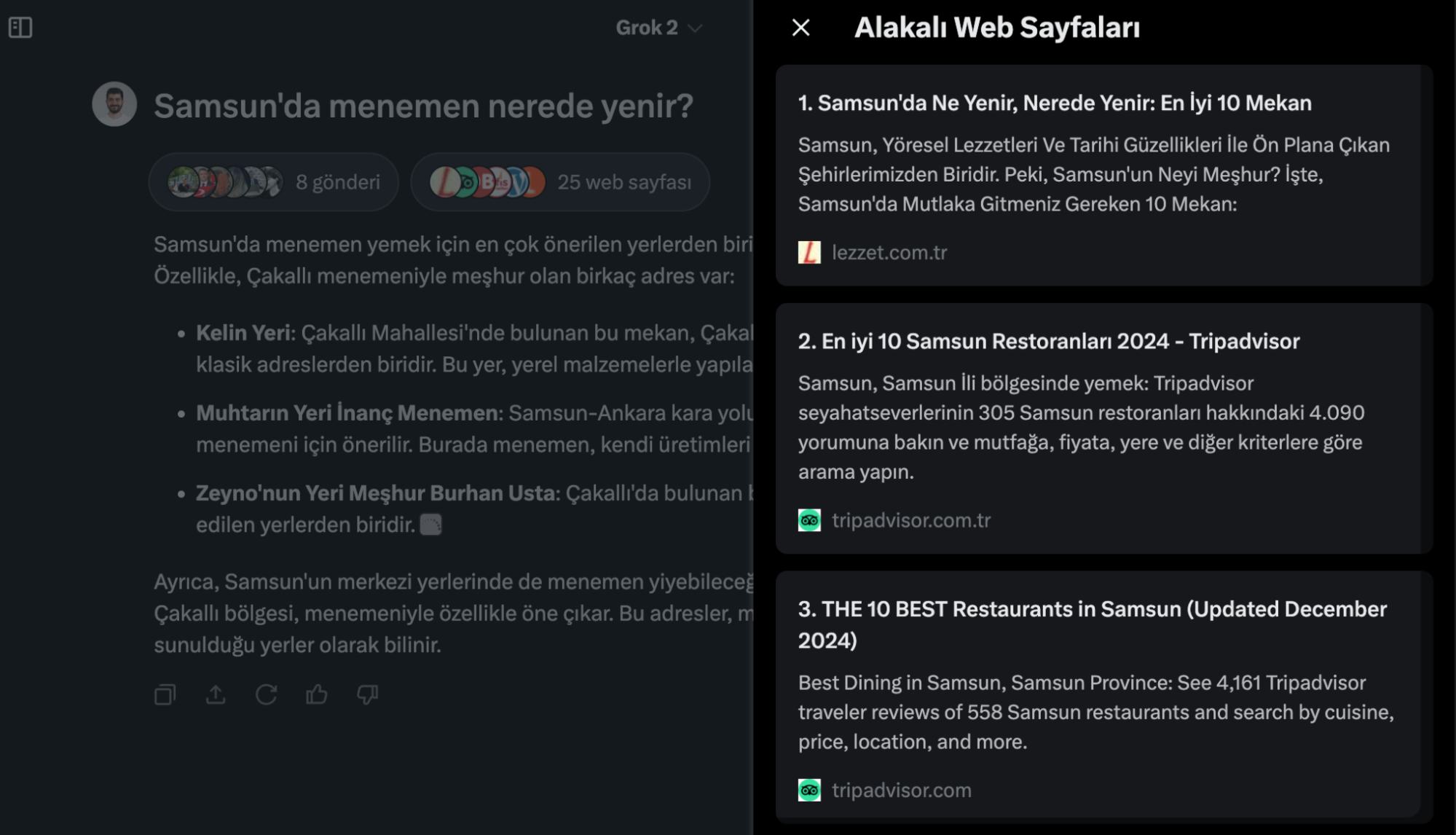
The SERP in Google, on the other hand, has a different appearance:
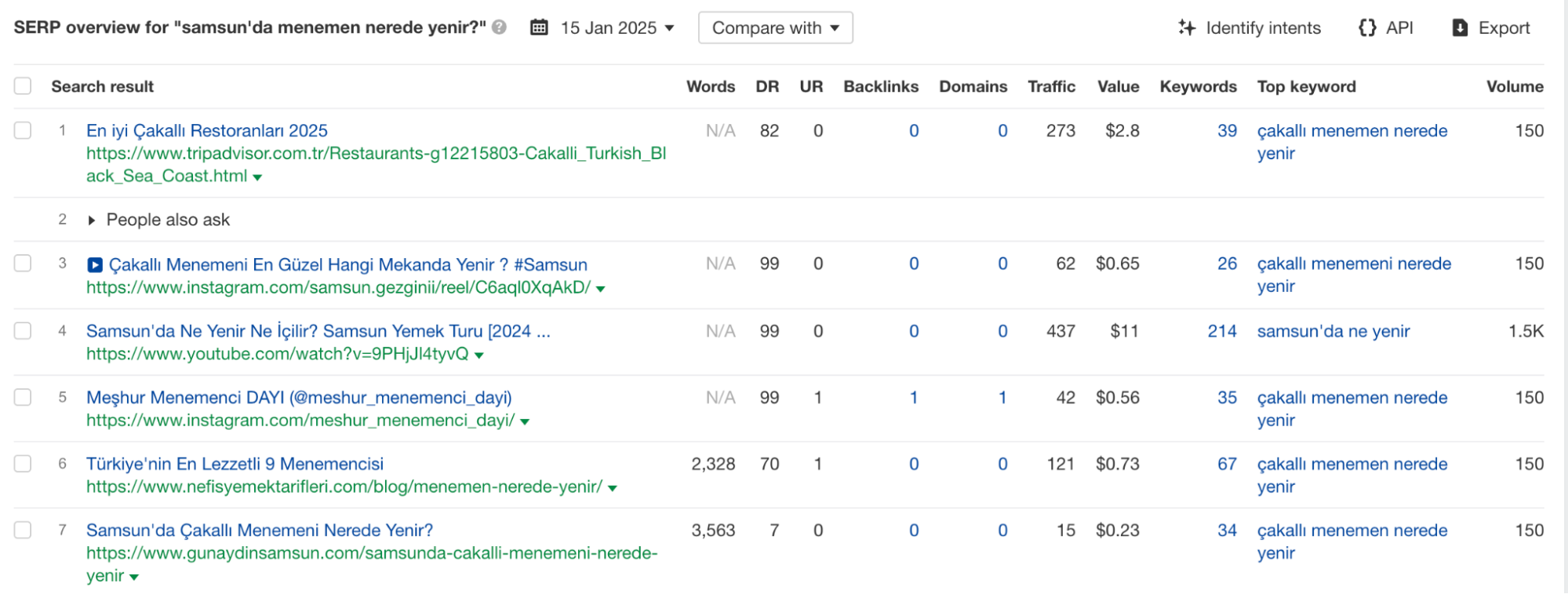
2. Number of Sources
If the search is not unusual or brand-specific, Google typically shows only one page from each site in the SERP. However, in Grok, a site may appear with multiple pages:
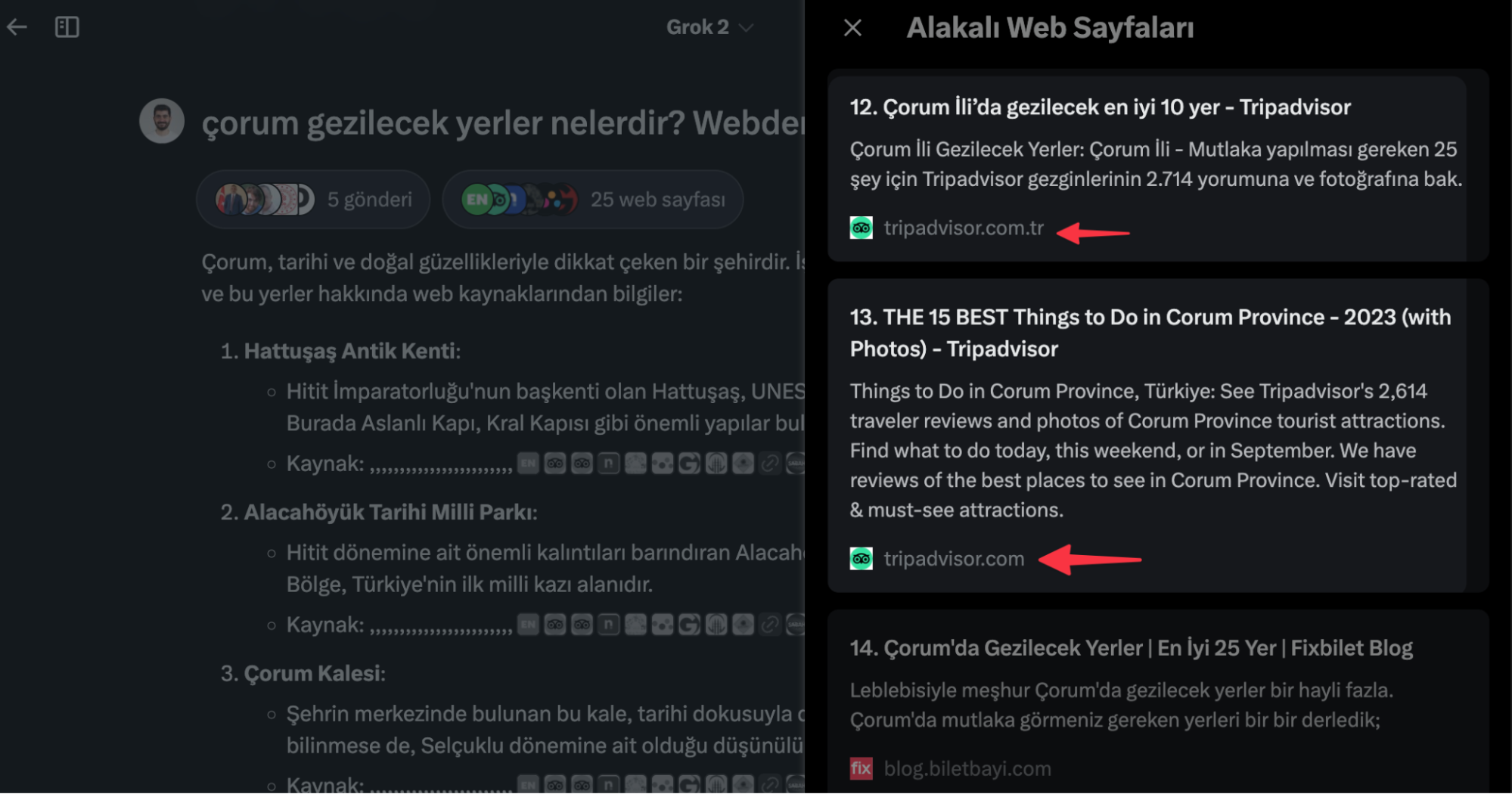
In brand-related searches, there are many references to the main domain:
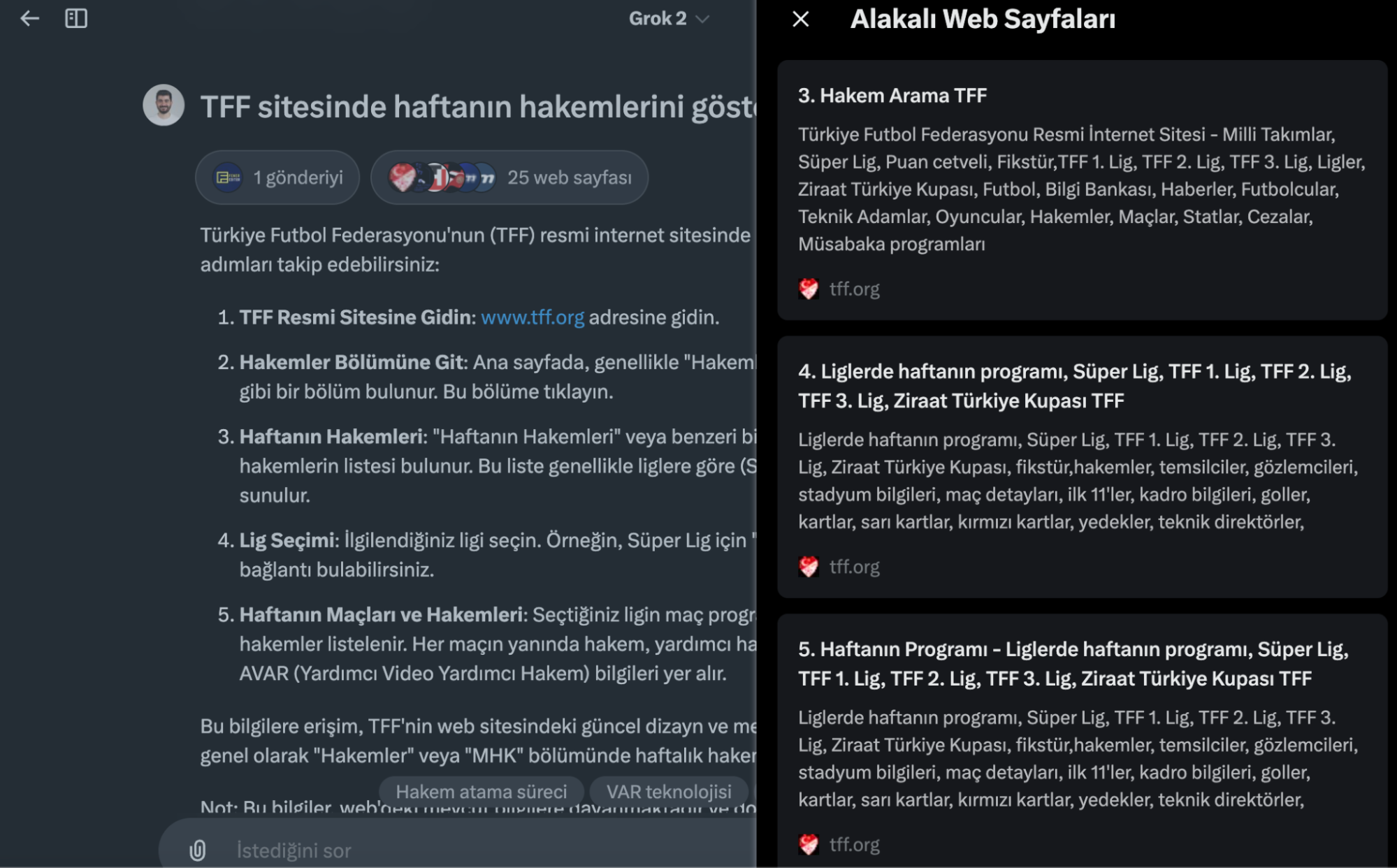
3. Total Number of Sources
From what I've observed, the web sources section lists a maximum of 25 pages. A page from the site appearing at the top of the list may also show up at the bottom. Additionally, paying attention to the site favicons is important here as well; it’s always a good idea to use favicons when possible.

Tired of reading?
You can also listen to this blog post as a podcast we created with Google NotebookLM on Spotify.
4. Description
The application displays the meta description section of the pages as it is. Therefore, I can emphasize once again that the meta description is quite important, as it plays a crucial role in summarizing the content of the page and indicating its topic.
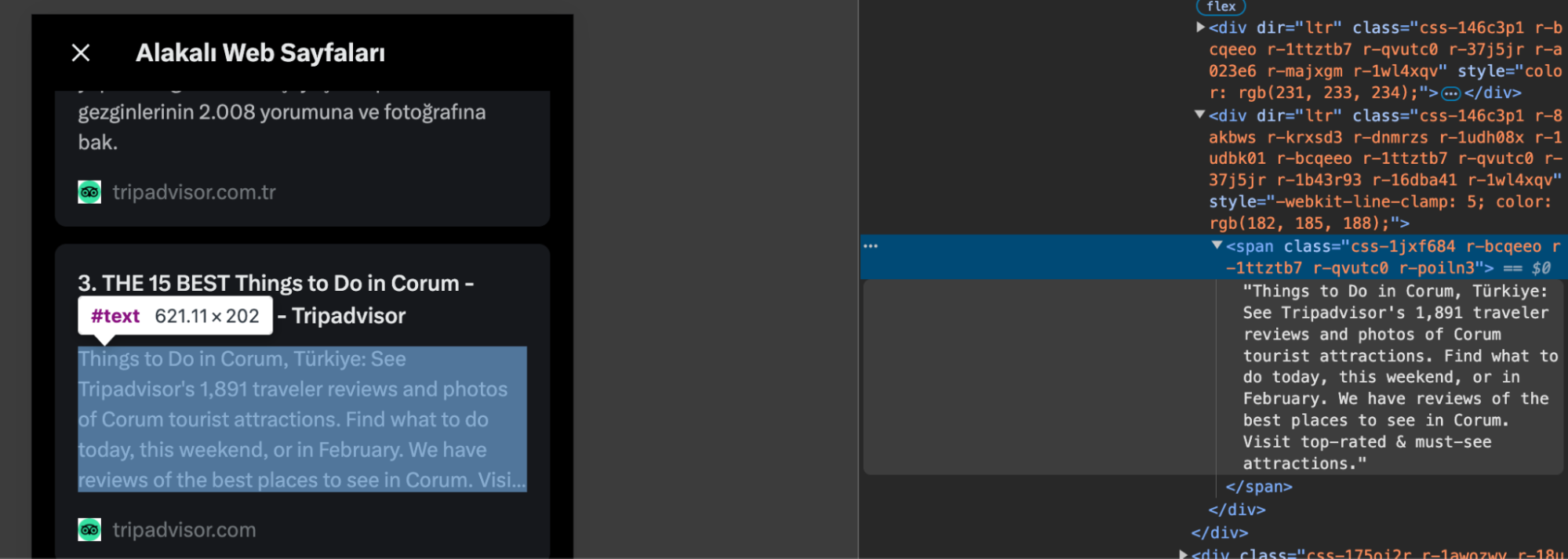
If the page doesn't have a meta description, it shows as empty and does not generate one. Additionally, the description section typically displays an average of 320 characters.

5. News Sources
In the web pages section, the news results and websites shown are not presented as a separate feature like in Google. It first displays a page specific to the site in Ankara and allows users to gather information from there. Of course, these results can vary with different prompts and searches. Please consider what I’ve written as just an example.
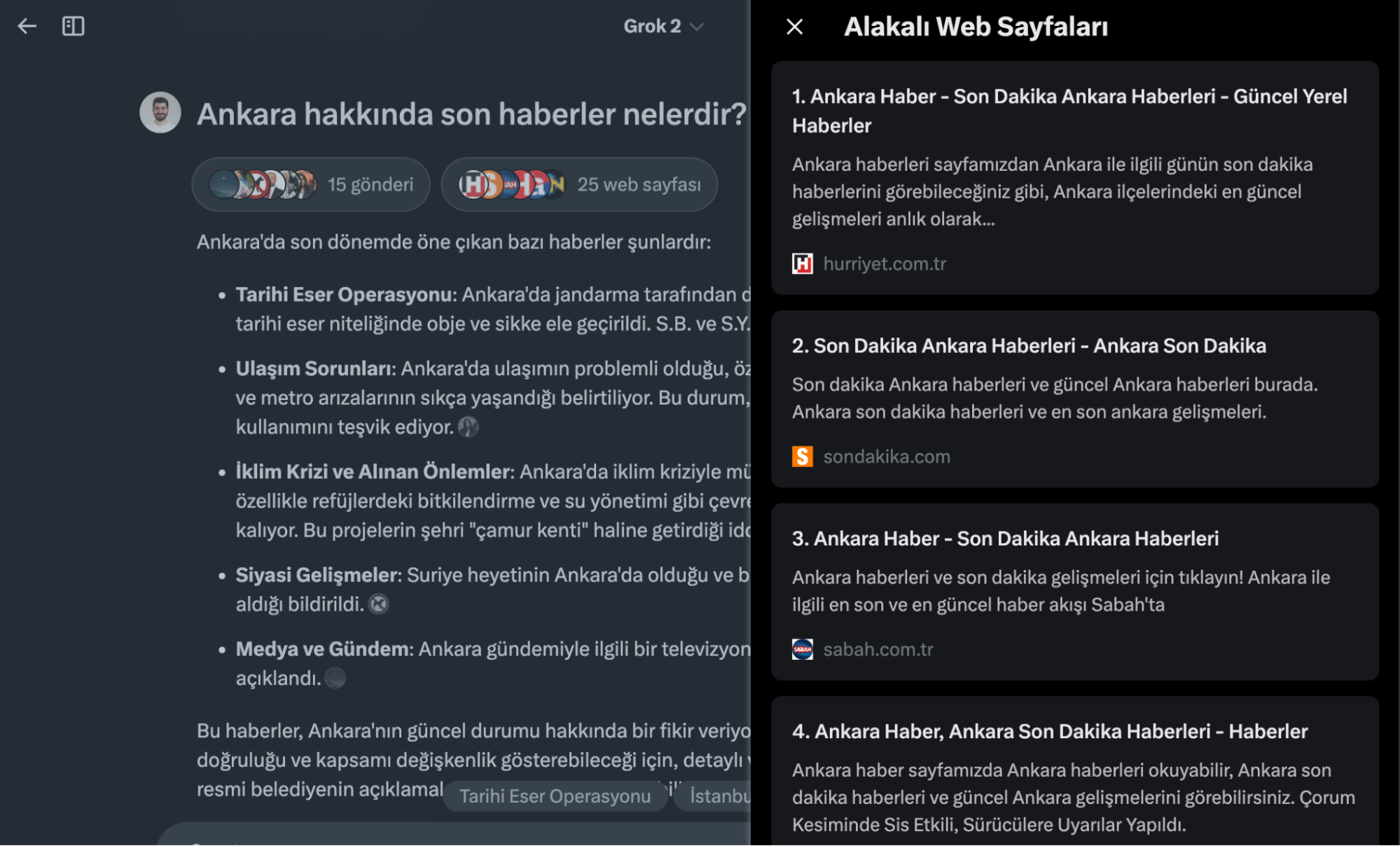
When I search with a Turkish prompt, instead of Turkish news sources, it shows examples from news sources in France.

6. Canonical
For example, the canonical section of the page https://www.the-independent.com/topic/french-politics from the sources points to a different site.

It seems that this doesn't cause an issue for Grok, as it lists the source:

A page with a "noindex" tag should not typically appear in Grok results; however, there might be delays in updates due to the system's late refresh.
7. Detection of Updates
Content updates may be detected a bit slower compared to Google. I’ll give a personal example from my site. For instance, when I updated a piece of content, it took about 15 days for the system to recognize the change. On the other hand, websites with more traffic seem to be detected much earlier. Of course, making a general assumption like "it will be detected after x days" would not be entirely accurate.

8. 3XX Redirected Pages
A page that is redirected with a 3XX status still appears in Grok without the final URL. For instance, a redirect added 3-4 months ago may not yet be detected.

As a result, I wanted to share my observations regarding the web results Grok provides from an SEO perspective. The quality of the content, prompts, and many other topics could already form the basis for another blog post.















